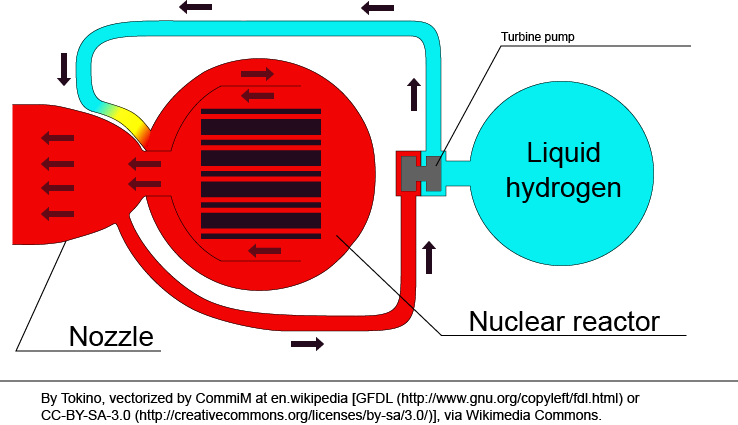
Texas A&M University nuclear engineering doctoral student and Idaho National Laboratory (INL) research scientist Vishal Patel is designing the space ships of tomorrow, developing rockets powered by nuclear thermal propulsion (NTP) that may one day take humans on their journey to Mars.
“The basic design is similar to chemical rockets, where you use chemical reactions to heat up a working fluid like hydrogen and you pump it through a nozzle to create thrust,” Patel said. “With NTP engines, instead of using a chemical reaction you use nuclear fission to heat up that same fluid and run it through the same nozzle to get your thrust.”
According to Patel, NTP will allow the rocket transporting the astronauts to reach Mars at a rate of 1.5 to 1.75 times faster than if they used chemical fossil fuels to make the journey. Using NTP will also eliminate the need for the astronauts to take large amounts of chemical fuel with them on their journey, giving them more space to pack supplies and other necessities. Both the chemical and NTP methods for powering the rocket use the same type of hydrogen working fluid to create thrust for the rocket, but NTP is found to be much more efficient. According to Patel there are additional benefits.
“The shorter transit time will allow astronauts to be in space in a low gravity environment for less time, which will mean less radiation exposure from cosmic sources for these astronauts,” Patel said. “Right now, that might be a deal breaker for chemical as a fuel source because more radiation exposure will cause harm to those astronauts.”
Solar energy has also been considered as an alternative and would take energy from the sun using solar panels on the craft and convert it into electrical energy, but it would be slower than both nuclear and chemical energy sources. However, Patel does advocate for the usage of solar energy in transporting supplies for the mission ahead of time, which will be there before the astronauts arrive and won’t be subject to radiation issues.
![Vishal_Patel_NTP[2]](../_news-images/patel_426x568.jpg)
While the NTP system has many advantages, Patel and the other members of his team are working to overcome obstacles in the knowledge base regarding NTP technology. NTP technology has been considered in the past by the U.S. government as a part of Project Rover, an ongoing U.S. government project from 1955 to 1972 that designed a NTP engine to get people to the moon and then to Mars. However, the government ultimately decided not to pursue a space program and one of the team’s initial hurdles is that while these technologies have been demonstrated in the past, there is not an NTP engine currently running. Since most of the engineers who worked as a part of project Rover have either retired or passed away, Patel and the other members of his team are on a journey of rediscovery, and he says this isn’t necessarily a bad thing.
“Although we don't have the previous expertise anymore, this gives us an opportunity to find new ways of constructing and analyzing things computationally and experimentally so we can improve on those designs,” Patel said. “Such as using low enriched uranium as opposed to high enriched uranium.”
Patel and his group have demonstrated computationally that the long held belief that highly enriched uranium will always be better than low enriched uranium is not the case. The next step is for Patel and the team to show this in experimental models.
“What it comes down to is that the smallest nuclear reactor is not always going to be the best nuclear reactor for this type of engine because of thermal limits,” Patel said. “We need a certain surface area for heat transfer to ensure we keep the fuel from failure limits [and] this idea enables us to use low enriched uranium.”
Patel also credits innovations in the nuclear private sector as beneficial to successful design of the craft. According to Patel, smaller businesses in the private sector can fund and can develop a design solution for a small component of the system. This can sometimes be preferable to larger corporations developing the entire system themselves because of the immense amount of project funding required. For Patel, the work he and others have contributed to the design of the rocket serves to empower the explorative interest of this generation.
“I see it as inspiring the next generation,” Patel said. “When I was kind of younger and there was still a bigger space program at NASA, a lot of kids back then wanted to be astronauts. Now when I talk to kids you don't really see that anymore, so I want to bring that back to give people the idea of wanting to explore the unknown.”
You can read Patel's article regarding his work on the ANS Cafe website here.